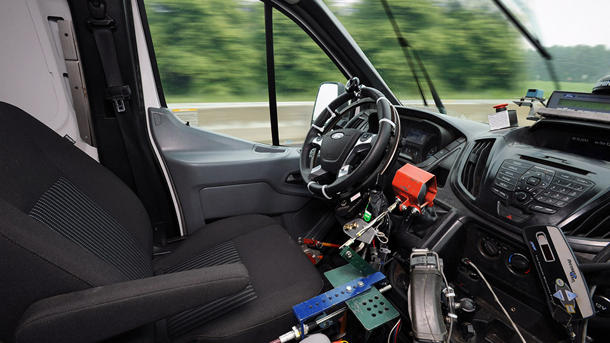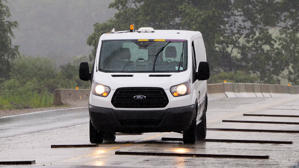
Even in an era where most large automakers have a supercomputer available to help design vehicles, there's still no alternative to putting hundreds of thousands of miles on a new model to shake out glitches before it goes on sale. That has always meant a cadre of bleary-eyed test drivers who work endless hours running laps on proving grounds — until Ford came up with a way to have its vehicles test themselves through robotics that don't need caffeine.
Ford says it developed its new system, a first in the industry, in part because the tests for some of its truck models had grown so strenuous they posed a danger to drivers who ran them too frequently. All automakers have similar tracks with everything from gravel to speed bumps to pothole-strewn pavement that can mimic years of wear in a few months of constant driving — but because of their severity, the human drivers were limited to running them only once a day.
 Using systems from a Utah supplier of robotic controls, Ford built a semi-autonomous driving system at its Michigan Proving Grounds in Romeo, Mich. Inside the vehicles, a control module handles steering, acceleration and braking, following a course via GPS and tracked remotely from a control center. The system can keep the truck on course down to one inch, and should something rush in front of the car — deer strikes are not unheard of at such centers — the sensors will stop the test automatically.
Using systems from a Utah supplier of robotic controls, Ford built a semi-autonomous driving system at its Michigan Proving Grounds in Romeo, Mich. Inside the vehicles, a control module handles steering, acceleration and braking, following a course via GPS and tracked remotely from a control center. The system can keep the truck on course down to one inch, and should something rush in front of the car — deer strikes are not unheard of at such centers — the sensors will stop the test automatically.
Ford says it's using the system first on the new Transit vans due out in early 2014, allowing human drivers to focus on other programs where backbreaking pavement runs aren't so crucial. Ford says the system isn't meant for public consumption, although given how fast self-driving technology has advanced, the idea of a pickup that could haul itself isn't so far-fetched. VIDEO


